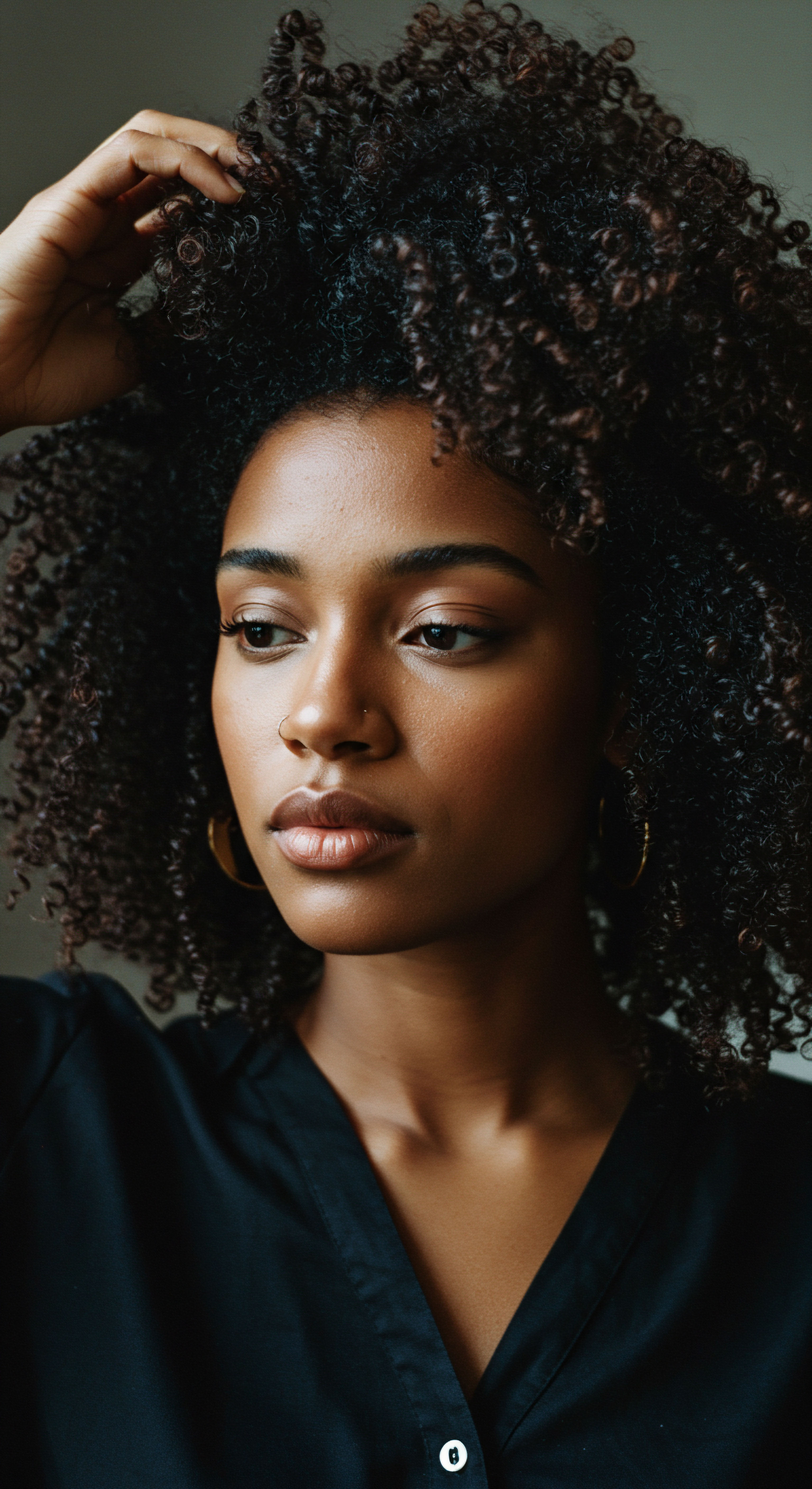
Roots
A quiet knowing resides within us, a sense that our outward presentation speaks volumes, perhaps even echoes across generations. Consider the strands that crown us, the very fibers of our being. They are not merely biological outgrowths; they have, since time immemorial, held a deep, resonant meaning, particularly within the ancient communities of Africa.
This meaning stretches far beyond superficial appearance, reaching into the very core of identity, status, and spiritual connection. To truly grasp the significance of hair in these venerable societies, one must look to its foundational role, understanding it as a living testament to heritage and an active participant in daily existence.
For countless millennia, across the diverse landscapes of the African continent, hair was a language spoken without words. It communicated tales of belonging, narratives of individual journey, and proclamations of societal standing. The ways in which hair was cared for, styled, and adorned were never arbitrary; each deliberate act carried weight, a quiet declaration visible to all. This understanding of hair as a profound medium of expression begins with its very substance, its organic presence, which was seen not just as a part of the body, but as a connection to the world around.

The Earth’s First Fibers ❉ A Biological Canvas
Before any adornment or styling, the natural characteristics of African hair itself held significance. Its inherent texture, its coils and curls, were not seen as something to be straightened or subdued, but rather as a natural blessing, a unique signature of the continent’s peoples. The diverse range of textures, from tightly coiled to wavy, spoke to the incredible genetic diversity within African communities. These distinct textures often dictated the types of styles that could be created, leading to a vast array of techniques developed over centuries.
The very act of tending to hair, the gentle cleansing and conditioning with natural elements, was a foundational ritual. Botanicals, clays, and oils from the land were used not only for their nourishing properties but also for their symbolic connection to the earth and its bounty. This connection reinforced the idea that hair, like the earth, was a living entity requiring respectful cultivation. The health and vitality of one’s hair could be seen as a reflection of one’s overall well-being and connection to the natural order.
Hair in ancient African communities transcended mere aesthetics, serving as a profound communicator of identity, status, and spiritual ties.

How Did Hair Connect to Lineage and Community?
Hair served as a visible marker of lineage and community affiliation, a living family tree worn proudly upon the head. Specific styles, patterns, or adornments could immediately identify a person’s ethnic group, clan, or even their specific family line. This was particularly vital in large, interconnected societies where visual cues facilitated immediate recognition and understanding of social roles. The continuity of these styles through generations created a powerful bond, a tangible link to ancestors and shared history.
Children, for instance, might wear styles that signified their age or readiness for certain rites of passage. Elders, with their often untouched or distinctively styled hair, carried the weight of wisdom and ancestral memory. In many communities, the sharing of hair traditions was a communal act, often passed down from elder women to younger generations, reinforcing intergenerational bonds and the collective preservation of cultural heritage. The act of styling hair became a moment of shared storytelling, instruction, and quiet connection.
Braids, for example, were not simply decorative; they were intricate maps of social identity. The direction of the braids, their number, the specific partings, and even the type of hair extensions used could all convey messages. In some West African societies, parallel rows of braids might indicate agricultural abundance, mirroring cultivated fields, thereby connecting the individual’s appearance to the community’s prosperity and their relationship with the land.
- Patterns ❉ Specific geometric designs or partings often denoted tribal affiliation or marital status.
- Materials ❉ Adornments like cowrie shells, beads, or precious metals could signify wealth or social standing.
- Styles ❉ Distinctive styles, such as towering coiffures or tightly matted locks, often marked individuals of high rank or spiritual significance.
| Element Cowrie Shells |
| Potential Meaning Wealth, fertility, spiritual protection |
| Element Feathers |
| Potential Meaning Status, bravery, connection to spirit world |
| Element Clay/Ochre |
| Potential Meaning Mourning, ritual purity, tribal identity |
| Element Specific Braid Patterns |
| Potential Meaning Marital status, age group, lineage |
| Element These elements varied widely by community and context. |
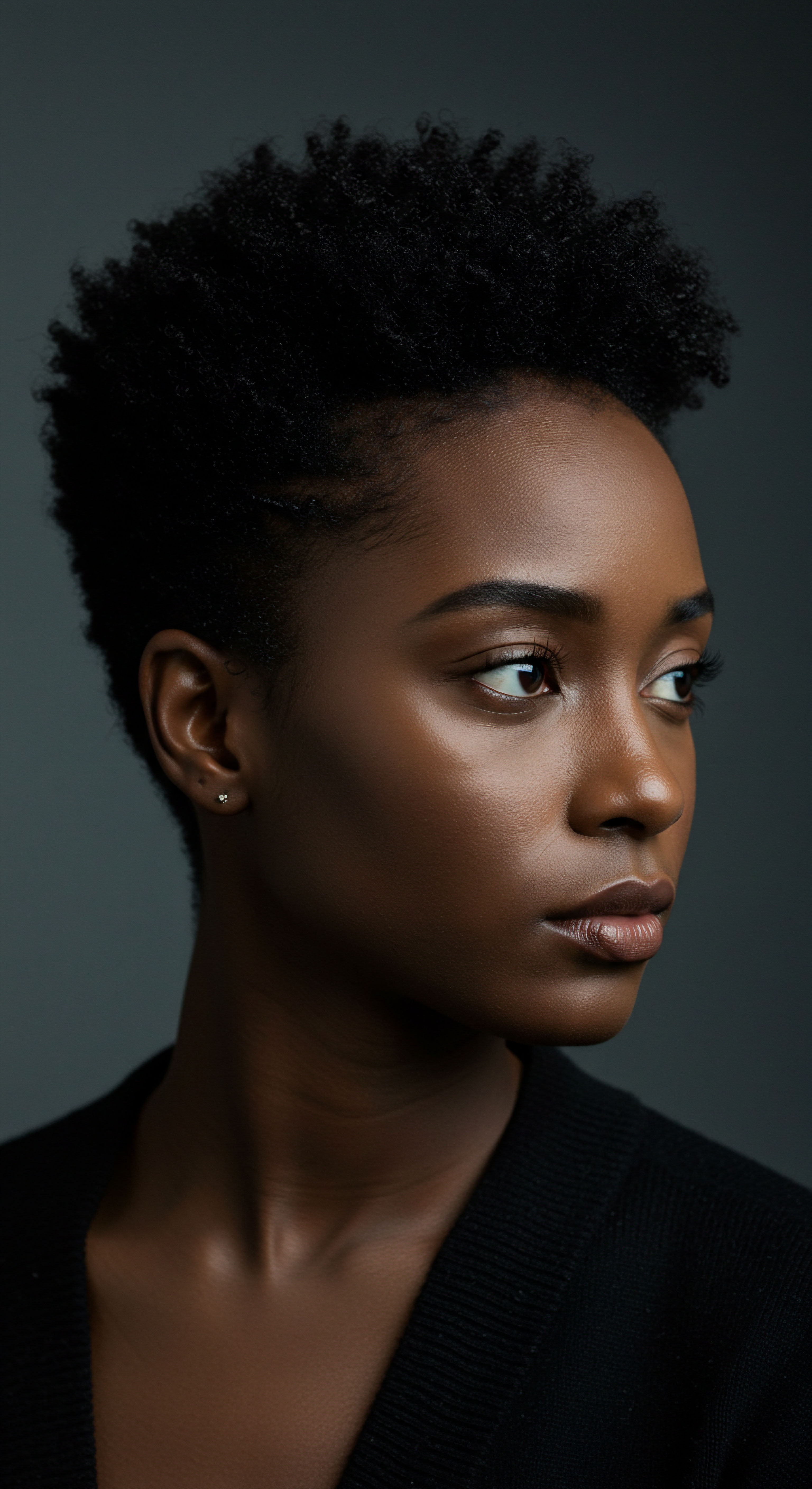
Ritual
Moving beyond the inherent significance of hair, we arrive at the deliberate practices that transformed it into a vibrant, active participant in daily life and ceremonial events. This section explores the intricate rituals and styling techniques that were not merely aesthetic choices but powerful, purposeful actions. Here, the focus shifts from what hair simply was to what it did —how it was shaped, adorned, and honored to express profound truths about an individual’s journey and their place within the collective. It is in these meticulous practices that the depth of hair’s meaning truly comes alive, offering a glimpse into the careful consideration given to every strand.
The preparation and styling of hair were often communal activities, especially among women, fostering bonds and transmitting knowledge. These sessions were opportunities for storytelling, sharing wisdom, and reinforcing social structures. The patience and skill required for many of these intricate styles underscored their importance; they were not rushed endeavors but acts of mindful creation, reflecting the value placed on the hair itself and the messages it conveyed.
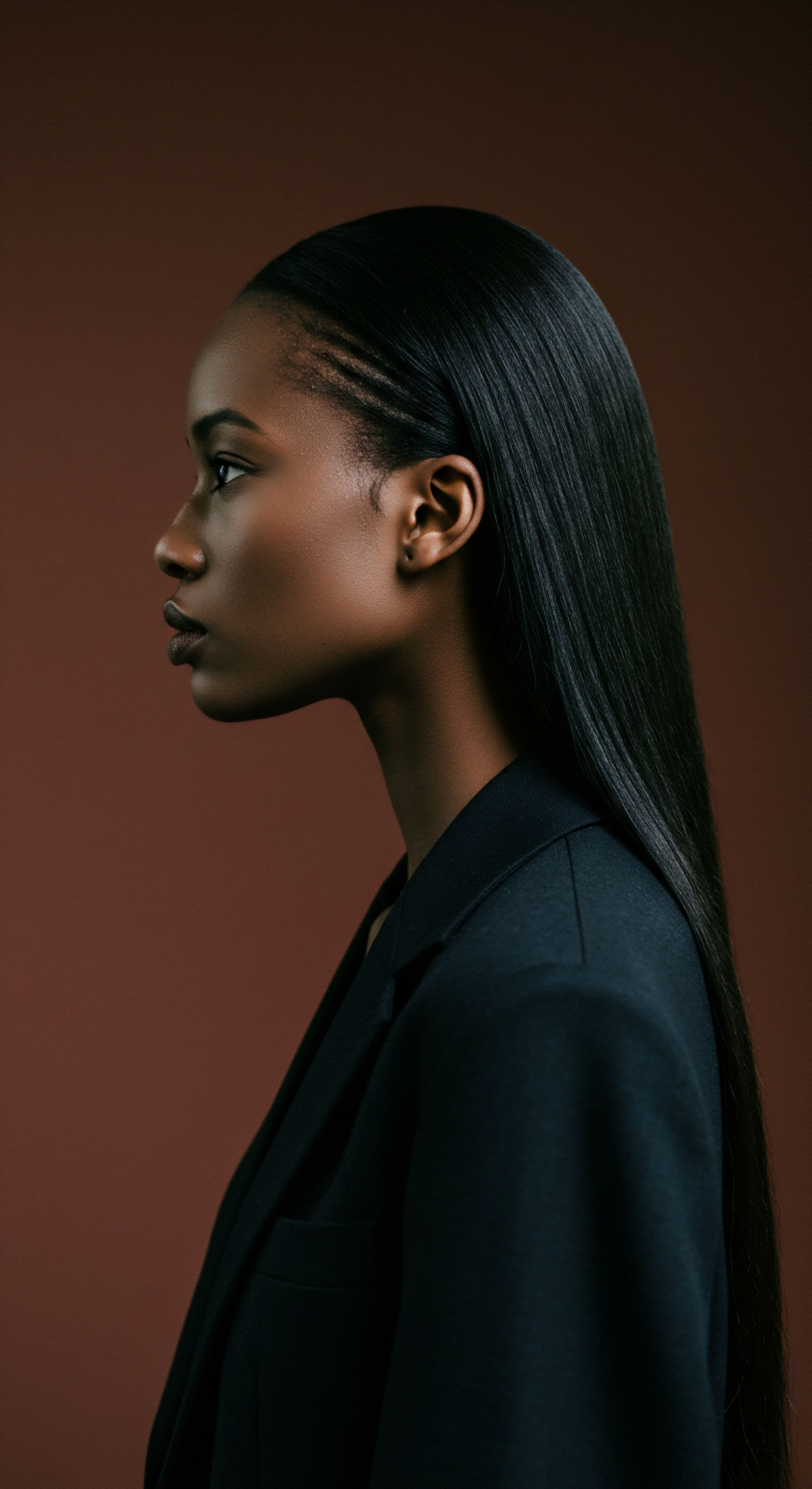
Styles as Silent Stories
Each twist, coil, and braid in ancient African communities told a story, a silent yet potent communication understood by all within the community. Hairstyles served as a dynamic form of non-verbal communication, conveying details about a person’s age, marital status, social rank, wealth, and even their current emotional state. For example, a young, unmarried woman might wear a distinct style that differed significantly from that of a married woman or a new mother. These visual cues provided immediate social context, allowing for smooth interactions and clear understanding within the community.
Consider the Mangbetu women of Central Africa, whose elaborate fan-shaped coiffures, supported by internal frameworks, were not only a mark of beauty but also a symbol of aristocratic status and intellectual prowess. The very act of maintaining such a complex style required dedicated time and assistance, further solidifying the wearer’s position. The time and effort invested in these coiffures were a testament to the wearer’s importance and the community’s shared appreciation for artistry and distinction.
Hair rituals in ancient Africa were not mere grooming; they were purposeful actions communicating social standing, age, and spiritual connection.
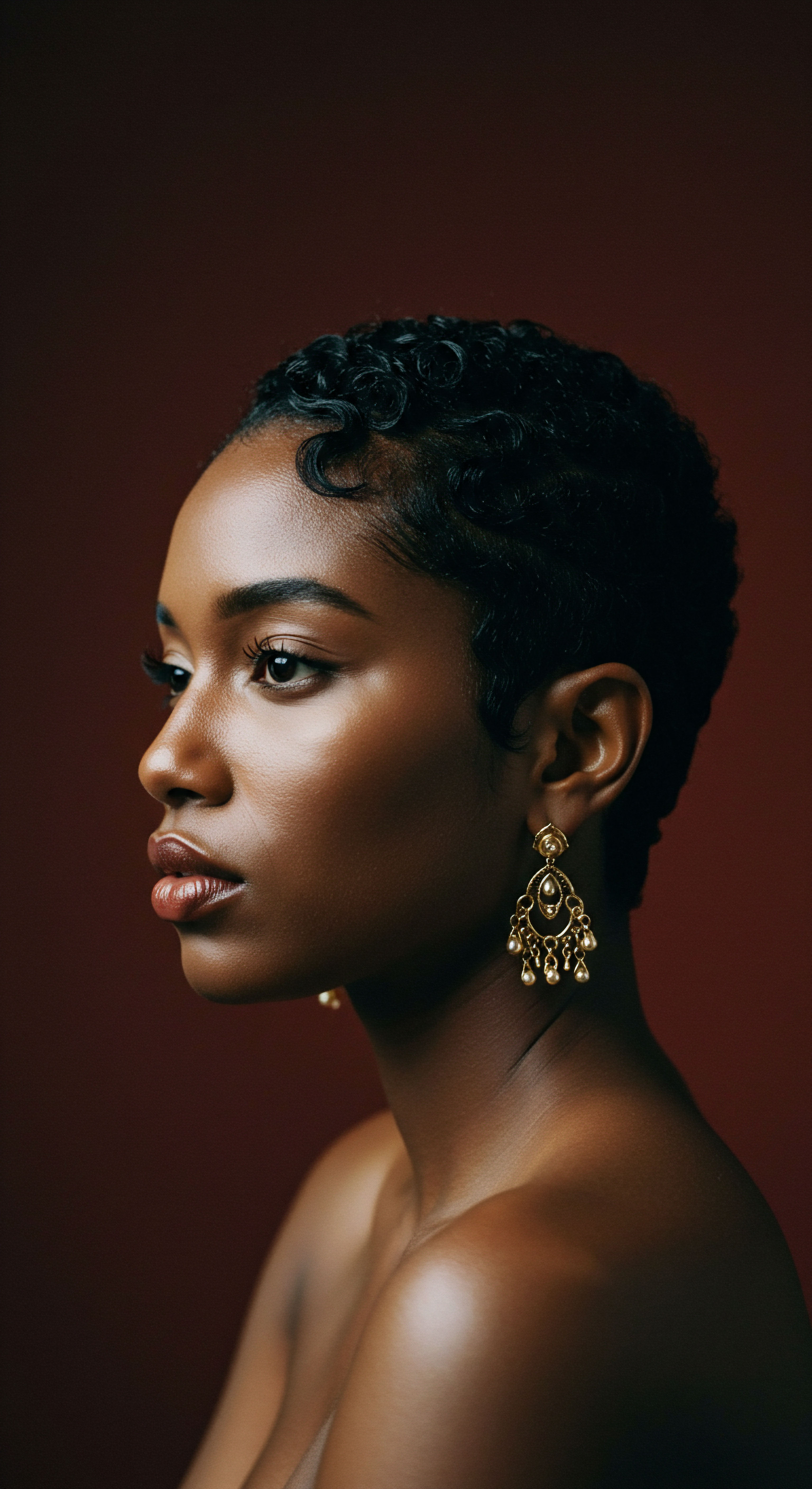
What Rituals Shaped Ancient African Hair Practices?
Rituals surrounding hair were deeply embedded in the life cycle and significant events. From birth to death, hair played a ceremonial role, marking transitions and signifying changes in status. During naming ceremonies, a child’s first haircut might symbolize their entry into the community. For adolescents, specific styles could signify readiness for adulthood, marriage, or initiation into secret societies.
Mourning rituals often involved specific hair treatments, such as shaving the head or applying ash or clay, to signify grief and detachment from worldly concerns. Conversely, during celebrations or before important events like war or harvest, hair might be adorned with precious materials, oils, and elaborate styles to invoke blessings, strength, or prosperity. These practices underscored the belief that hair was a conduit for spiritual energy, capable of influencing outcomes.
The care of hair itself was often a ritual. Cleansing with natural soaps made from plants, conditioning with shea butter or palm oil, and intricate detangling sessions were not just about hygiene. They were acts of self-care and community care, performed with intention and often accompanied by songs, proverbs, or shared stories. The communal nature of hair styling sessions fostered social cohesion, allowing for the transmission of cultural values and the strengthening of intergenerational bonds.
In many communities, specialized hair stylists held significant social standing. These individuals were not just artisans; they were often confidantes, spiritual advisors, and keepers of traditional knowledge. Their hands, adept at creating complex designs, were also seen as capable of influencing the spiritual well-being of the person whose hair they tended. This specialized knowledge was often passed down through apprenticeships within families, preserving the integrity and meaning of these ancient practices.
- Initiation Styles ❉ Marking passage from childhood to adulthood, often involving specific cuts or elaborate new styles.
- Mourning Styles ❉ Shaving of the head or application of ash to signify grief and respect for the deceased.
- Celebratory Adornments ❉ Use of beads, shells, gold, or vibrant threads to mark festivals, weddings, or victories.
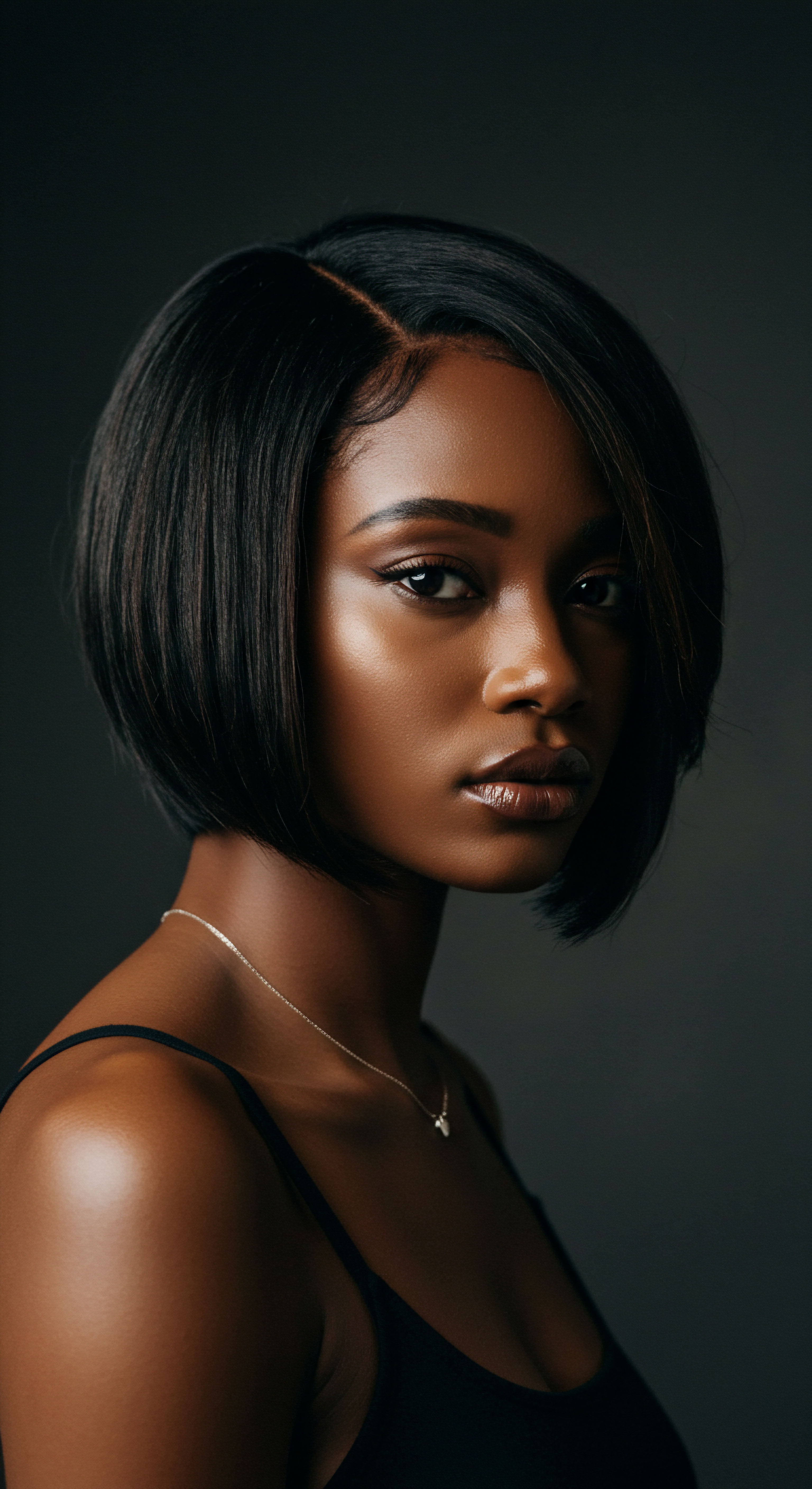
Relay
The journey through hair’s significance in ancient African communities deepens as we consider its role in the grander scheme of existence—how it served as a bridge between the physical and spiritual realms, influenced governance, and mirrored cosmic order. This exploration transcends the visible, inviting us to contemplate hair as a profound symbol of life force, a repository of wisdom, and a potent tool in the hands of leaders and spiritual practitioners. Here, the meaning of hair becomes a complex interplay of science, belief, and societal structure, revealing a sophistication that speaks volumes about these venerable civilizations.
Hair, particularly the crown of the head, was often considered the closest point to the divine, a direct channel to ancestral spirits and cosmic energies. This belief imbued hair with immense power, making its care and presentation a matter of deep spiritual concern. The elaborate lengths to which some communities went to protect and adorn hair speak to this reverence, recognizing it as a living antenna, capable of receiving and transmitting vital energies.

Hair as a Spiritual Conduit
In many ancient African belief systems, the head was regarded as the seat of the soul, the locus of spiritual power and identity. Consequently, hair, as an extension of the head, was viewed as a sacred part of the body, a conduit through which spiritual communication could occur. It was believed that spirits could enter or leave the body through the hair, and that hair itself held a person’s life force and wisdom.
This perception meant that hair was often handled with great care and respect, especially when cut. Clippings were rarely discarded carelessly; they were often buried, burned, or kept in sacred places to prevent their misuse by those with ill intentions.
The practice of Dreadlocks, for instance, in some ancient contexts, was not merely a style but a profound spiritual commitment. The unsevered, growing locks were seen as an accumulation of spiritual energy and knowledge, a physical manifestation of a person’s connection to the divine and their ancestors. This was a visible sign of spiritual devotion and often associated with seers, healers, and spiritual leaders who sought to maintain an unbroken link to higher realms.
Beyond appearance, ancient African hair served as a potent spiritual conduit, influencing leadership, healing, and cosmic connection.

Did Hair Influence Power Structures in Ancient Communities?
The symbolism of hair extended powerfully into the political and social hierarchies of ancient African societies. Rulers, chiefs, and spiritual leaders often wore distinctive, elaborate hairstyles that visually set them apart and reinforced their authority. These styles were not just aesthetic; they were carefully constructed to convey power, wisdom, and divine favor. The complexity and height of a coiffure, for example, could signify a leader’s elevated status and closeness to the heavens.
For example, among the Yoruba people of West Africa, specific head wraps and intricate hairstyles were reserved for royalty and high-ranking officials, often incorporating precious beads or gold. These styles were not only markers of status but also acted as a form of non-verbal decree, immediately identifying those in positions of power. The very act of maintaining these elaborate styles required significant resources and the labor of skilled stylists, further underscoring the wearer’s wealth and influence.
Hair also played a role in legal and judicial processes. In some communities, an individual’s hairstyle could indicate their guilt or innocence, or their status during a trial. The manipulation of hair, such as shaving it in shame or letting it grow wild in defiance, could be a public declaration of one’s standing before the community and its justice system.
This intricate connection between hair and legal standing is highlighted by historical accounts. For instance, in certain pre-colonial West African judicial systems, the deliberate dishevelment of hair could be a sign of public penance or an admission of guilt, demonstrating how deeply integrated hair symbolism was into the fabric of societal order.
The strategic use of hair in warfare also merits consideration. Warriors from various African communities adopted specific hairstyles not only for identification but also to invoke fear in enemies or to signal their readiness for battle. The Maasai warriors, for instance, famously wore long, ochre-dyed braids, a style that projected fierce identity and cultural pride, intimidating adversaries while unifying their ranks. These battle-ready coiffures were a psychological weapon as much as a visual statement, embodying the strength and spirit of the community.

Hair and Healing Practices
Within ancient African communities, the connection between hair and healing was also recognized. Traditional healers and spiritual practitioners often incorporated hair into their remedies and rituals. It was believed that because hair held a person’s essence, it could be used in diagnostic practices or as part of a therapeutic intervention.
For instance, a small portion of a patient’s hair might be used in a divination ritual to ascertain the cause of an illness or to create a protective amulet. The understanding was that the hair retained a vibrational link to the individual, allowing for energetic transfer and healing.
This perspective highlights a holistic approach to well-being, where the physical, spiritual, and social aspects of a person were seen as interconnected. The health of one’s hair was not isolated from the health of the body or the spirit, reinforcing the idea that beauty and wellness were inextricably linked to one’s alignment with communal values and spiritual forces. The care given to hair, therefore, extended beyond mere aesthetics to encompass profound aspects of life, health, and cosmic alignment.
| Role Rulers/Chiefs |
| Hair Manifestation Elaborate, towering coiffures; adorned with precious metals. |
| Role Spiritual Leaders/Healers |
| Hair Manifestation Dreadlocks, untouched natural hair; specific ritualistic applications. |
| Role Warriors |
| Hair Manifestation Braids, often dyed with ochre; distinctive battle styles. |
| Role Mourners |
| Hair Manifestation Shaved heads, ash/clay applications. |
| Role Initiates |
| Hair Manifestation New, distinctive styles marking passage into adulthood. |
| Role Hair served as a visual language for status, power, and spiritual connection. |

Reflection
As we gently draw this exploration to a close, it becomes clear that the significance of hair in ancient African communities was boundless, a living testament to human ingenuity, cultural depth, and spiritual reverence. It was a language without words, a canvas for identity, a conduit for the divine, and a silent narrator of life’s grandest moments. These ancient traditions remind us that hair is so much more than what meets the eye; it is a profound repository of heritage, a symbol of resilience, and a vibrant connection to a rich, enduring past. The echoes of these meanings still resonate today, inviting us to look upon our own hair with a renewed sense of wonder and respect, understanding its deep-seated connection to identity and belonging.

References
- Thompson, Robert Farris. Flash of the Spirit ❉ African and Afro-American Art and Philosophy. Random House, 1983.
- Opoku, Kofi Asare. West African Traditional Religion. FEP International Private Limited, 1978.
- Sieber, Roy, and Frank Herreman. Hair in African Art and Culture. Museum for African Art, 2000.
- Blier, Suzanne Preston. African Vodun ❉ Art, Psychology, and Power. University of Chicago Press, 1995.
- Drewal, Henry John, and Margaret Thompson Drewal. Gelede ❉ Art and Female Power Among the Yoruba. Indiana University Press, 1983.
- Nzewi, Meki. African Music ❉ Theoretical Content and Creative Continuum. Centre for Intercultural Music Arts, 1997.
- Perani, Judith, and Fred T. Smith. The Visual Arts of Africa ❉ Gender, Power, and Life Cycle Rituals. Prentice Hall, 1998.
- Rubin, Arnold. The Professional Hairdressers of Africa. African Arts, Vol. 4, No. 2, 1971, pp. 26-30.